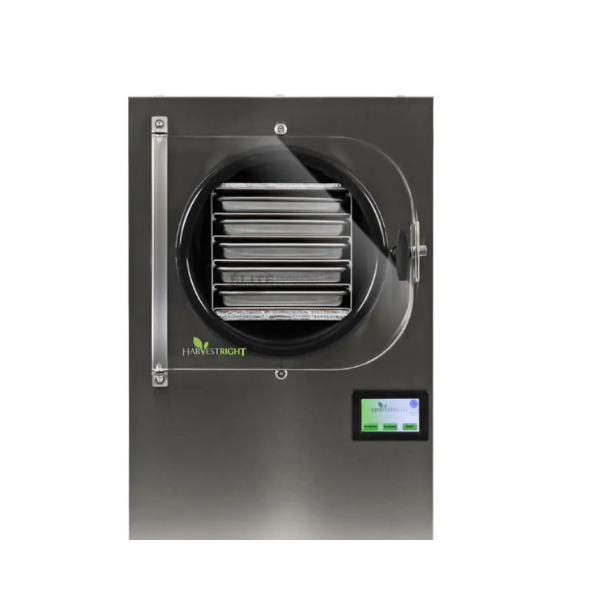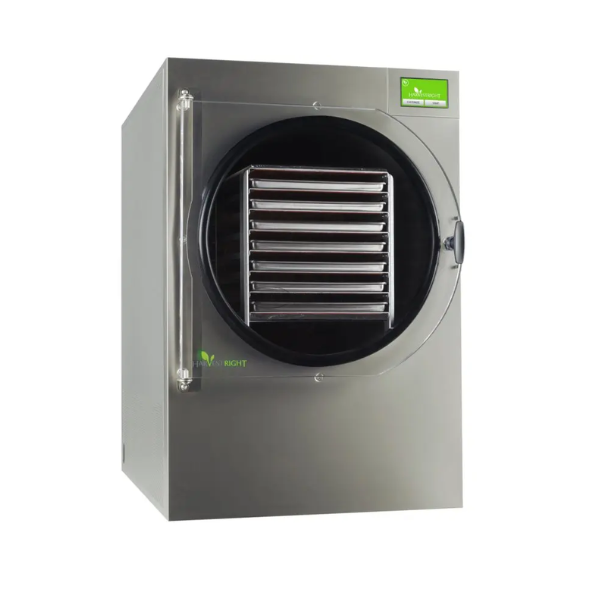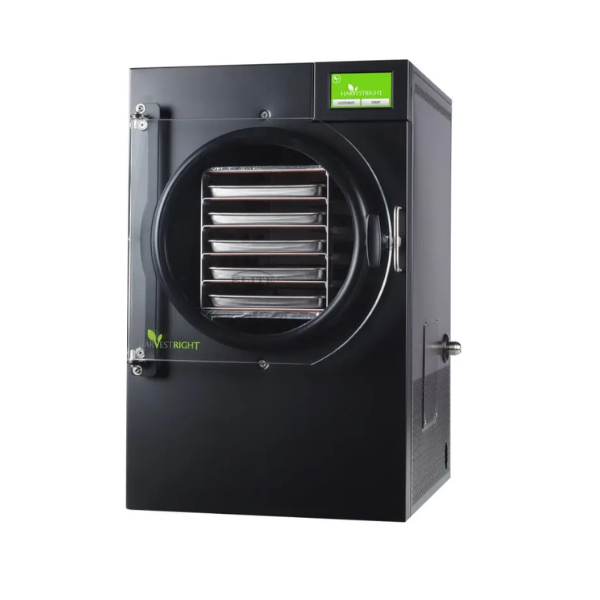Elite Metal Tools Articles
Industry news, tips, and updates on all things Elite Metal Tools
Unlocking the Potential of Home Freeze Drying: A Comprehensive Guide
The History of Freeze Dryers
The Birth of a Technology
Freeze drying, also known as lyophilization, is not a new concept. In fact, its roots can be traced back to the early 20th century. During World War II, freeze drying was used to preserve blood plasma and penicillin, ensuring that they could be transported over long distances without spoiling. This marked one of the first practical applications of the technology, highlighting its potential in preserving not just food but also crucial medical supplies.
From Laboratories to Living Rooms
For several decades, freeze drying was predominantly a tool for scientific research and large-scale food production. Its applications ranged from the preservation of biological specimens to the creation of astronaut food for space missions. The technology was confined to large, industrial settings due to the size and cost of the equipment involved. However, companies like Harvest Right have transformed this landscape, making freeze drying a feasible option for the average consumer.
Modern Adaptations
Today, freeze dryers are available in sizes and price ranges that are conducive to home use. They offer a user-friendly interface and automated systems that take the guesswork out of the process. Harvest Right, among other companies, has been instrumental in popularizing this technology, offering various models designed to fit into modern kitchens effortlessly.
Types of Freeze Dryers
Industrial Freeze Dryers
Before freeze drying became a household concept, it was primarily an industrial process. These industrial-grade freeze dryers are large, complex machines designed to handle mass quantities of food or other materials. Typically found in food processing plants or scientific laboratories, industrial freeze dryers can process hundreds or even thousands of pounds of material in a single run. However, due to their size and operational complexity, these machines are not suitable for home use.
Pharmaceutical Freeze Dryers
These specialized freeze dryers are used in the pharmaceutical industry to preserve sensitive biological materials such as vaccines, blood plasma, and other medicinal substances. They operate under stringent conditions, often requiring additional features like sterilization and precise temperature control to meet the demanding standards of the pharmaceutical industry. /product/15149
Commercial Freeze Dryers
Smaller than industrial models but larger than what you'd typically find in a home, commercial freeze dryers are designed for small businesses, research institutions, or serious hobbyists. They offer a middle ground in terms of both size and price and are commonly used for artisanal food products, scientific samples, and other specialized applications. /product/17836
Home Freeze Dryers
This is where companies like Harvest Right have truly innovated. Home freeze dryers are compact enough to fit into a standard kitchen yet powerful enough to preserve food effectively. Harvest Right, in particular, offers models in various sizes, ensuring that whether you're a small family or a committed prepper, there's a freeze dryer that will meet your needs. These machines are more accessible in terms of price and operation, making freeze drying a practical option for everyday consumers. /product/15152
Features to Consider in Home Freeze Dryers
-
Size: Choose a model that fits comfortably in your available space.
-
Capacity: Depending on your needs, select a machine that can handle the amount of food you plan to freeze dry.
-
Ease of Use: Look for models that offer an intuitive interface and automated systems.
-
Cost: While still a significant investment, the price of home freeze dryers has become more reasonable, especially when considering the long-term benefits.
How Freeze Drying Works
The Basic Principles
Freeze drying operates on a scientific principle known as sublimation. In this process, water is removed from the frozen material by converting directly from ice to vapor, bypassing the liquid state. This change occurs under vacuum conditions, which is why freeze dryers are equipped with a vacuum pump.
Step-by-Step Process
-
Preparation: The first step involves preparing the food that you wish to freeze dry. This could mean slicing fruits into smaller pieces or portioning larger meals into manageable sizes.
-
Freezing: The prepared food is placed in the freeze dryer, where it is rapidly frozen to a very low temperature, usually around -30°F to -50°F. This helps in preserving the cellular structure of the food.
-
Primary Drying (Sublimation): Once frozen, the freeze dryer's vacuum pump kicks in, creating a vacuum within the chamber. The temperature is then slightly raised to facilitate sublimation, during which the ice turns directly into vapor.
-
Secondary Drying: This phase removes any remaining moisture from the food. The temperature is raised further, and the vacuum is maintained to ensure all water content is eliminated.
-
Sealing and Storage: After the freeze-drying process is complete, the food is sealed in moisture- and oxygen-proof packaging to ensure it remains preserved for a long time.
The Role of Harvest Right
Harvest Right has simplified this otherwise complicated process by introducing automated systems and easy-to-understand interfaces in their home freeze dryers. Users can select predefined settings based on the type of food they are preserving, making it easy for even those with no prior experience to successfully freeze dry food.
Quality Control
One of the major advantages of using a Harvest Right freeze dryer is the level of control it offers. Unlike commercial freeze-dried foods, where you're uncertain about the quality and origin of the ingredients, home freeze drying allows you to choose the foods you wish to preserve, giving you complete control over your nutritional intake.
Benefits of Freeze Drying
Nutritional Preservation
One of the most noteworthy advantages of freeze drying is the preservation of nutrients. Traditional methods of food preservation, like canning or dehydrating, often result in a significant loss of nutritional content. Freeze drying, however, retains up to 97% of the food's nutritional value, ensuring that you're not compromising on health when opting for long-term storage.
Taste and Texture
Unlike other methods that can alter the taste and texture of food, freeze drying maintains the original flavor and even the color of the food. This makes it an ideal choice for preserving a wide variety of items, from fruits and vegetables to complete meals.
Long Shelf Life
Freeze-dried foods can last for up to 25 years when properly sealed and stored. This makes them an excellent option for emergency preparedness, long-term food storage, or even reducing everyday food waste.
Versatility
The applications of freeze drying extend beyond just fruits and vegetables. You can preserve dairy, meat, complete meals, and even desserts. This opens up endless possibilities for meal planning, bulk shopping, and even long-term travel preparations.
Space Efficiency
Freeze-dried foods are much lighter and take up less space compared to their original size, making them easier to store or transport. This is especially useful for outdoor activities like camping, hiking, or boating.
Lower Waste
In a society that's increasingly conscious about waste, freeze drying offers a sustainable way to store surplus food. Whether it's an overabundant harvest or bulk buying, you can preserve large amounts of food that might otherwise go to waste.
Economic Benefits
While the initial investment in a home freeze dryer can be substantial, the long-term savings are considerable. The ability to buy in bulk and preserve seasonal foods can lead to significant cost reductions over time.
Customization
When you freeze dry at home, you have complete control over portion sizes, ingredients, and even the seasoning of your food. This customization can be particularly beneficial for those with specific dietary needs or preferences.
Safety
Freeze drying kills bacteria and other pathogens, making it a safe method for food preservation. Moreover, home freeze dryers like those from Harvest Right come with built-in safety features, adding an extra layer of assurance.
Comparisons with Other Preservation Methods
Freeze Drying vs. Canning
Nutritional Content: Canning often involves heat, which can degrade the nutritional value of the food. Freeze drying maintains most of the nutrients, making it a healthier choice.
Shelf Life: Both methods offer long shelf lives, but freeze-dried foods can last up to 25 years if properly sealed, which is generally longer than canned foods.
Ease of Use: Canning can be labor-intensive and requires a considerable amount of skill to prevent contamination. Freeze drying, especially with user-friendly home machines like those offered by Harvest Right, is more straightforward.
Space: Canned goods take up more room and are heavier than freeze-dried items, making the latter more convenient for storage and transport.
Freeze Drying vs. Dehydrating
Nutritional Content: Like freeze drying, dehydration removes moisture from the food. However, it also tends to remove up to 50% of the food’s nutritional content, making freeze drying a superior choice in this aspect.
Texture and Flavor: Dehydrated foods often have a chewy texture and altered taste, while freeze-dried foods maintain their original texture and flavor.
Energy Consumption: Dehydrators typically use less energy but take longer to process food. Freeze dryers are more energy-intensive but are faster and produce a higher-quality result.
Freeze Drying vs. Vacuum Sealing
Preservation Technique: Vacuum sealing removes air but does not remove moisture, so it is generally used in combination with other preservation methods like freezing. Freeze drying removes both air and moisture.
Shelf Life: Vacuum-sealed foods have a shorter shelf life compared to freeze-dried foods and often require refrigeration.
Applications: Vacuum sealing is usually best for short-term storage, while freeze drying is ideal for long-term preservation.
Freeze Drying vs. Traditional Freezing
Texture and Quality: Traditional freezing can cause freezer burn and alter the texture of the food due to ice crystal formation. Freeze drying avoids this, preserving the food’s original texture and flavor.
Storage Space: Freeze-dried foods take up much less space compared to foods stored in a traditional freezer.
Emergency Preparedness: Traditional freezing requires a constant power supply to maintain food quality, which may not be reliable in emergency situations. Freeze-dried foods are stable at room temperature.
Harvest Right: The Best of All Worlds?
Companies like Harvest Right have made it easier than ever to access the advantages of freeze drying from the comfort of your home. By offering a range of options tailored to various household needs and sizes, Harvest Right provides a convenient and efficient alternative to other preservation methods.
Popular Applications of Freeze-Dried Products
Culinary Delights
Freeze drying isn't just for long-term storage; it's also a hit in the culinary world. Chefs often use freeze-dried ingredients to enhance flavors and create visually stunning dishes. The intense flavor and unique texture of freeze-dried fruits, for example, can make a striking addition to desserts, sauces, and salads.
Emergency Preparedness
Given the long shelf life and nutritional retention of freeze-dried foods, they're an ideal choice for emergency food storage. In times of natural disasters or other crises where access to fresh food may be restricted, having a stash of freeze-dried meals can be a lifesaver.
Outdoor Adventures
Whether it's hiking, camping, or long-haul boating trips, outdoor enthusiasts can benefit greatly from freeze-dried foods. They are lightweight, easy to pack, and simple to rehydrate with water, making them a convenient choice for nourishment on-the-go.
Space Missions
Freeze-dried food has been an integral part of space missions since the Apollo era. Its lightweight, long-lasting, and easy-to-consume characteristics make it an ideal choice for astronauts who need to minimize payload and waste.
Nutraceuticals and Supplements
Freeze drying is commonly used in the pharmaceutical industry to create high-quality supplements. The preservation of nutritional content in freeze-dried fruits and plants makes them an ideal candidate for nutrient-dense capsules or powders.
Snacks and Convenience Foods
The snack market has also embraced freeze drying. From freeze-dried fruit slices to yogurt bites, these snacks are not only tasty but also tend to be healthier than snacks preserved through other methods.
Specialty Coffees and Teas
Yes, even your morning cup of joe can be freeze-dried! Freeze-dried coffee retains much of the flavor and aroma of freshly brewed coffee, providing a high-quality alternative to instant coffee. Similarly, specialty teas are also available in freeze-dried formats.
Pet Food
For pet owners seeking nutritious and convenient options for their furry friends, freeze-dried pet foods offer a high-quality alternative to kibble or canned products.
Harvest Right: Expanding the Horizon
Harvest Right has tapped into these diverse applications by offering home freeze dryers that cater to a variety of needs. Whether you are an adventurer, a homesteader, or someone keen on long-term food security, Harvest Right provides the tools you need to tap into the wide array of applications that freeze drying offers.
Getting Started with Freeze Drying
Assess Your Needs
Before investing in a freeze dryer, it's essential to determine your specific needs. Are you interested primarily in long-term food storage, or are you more focused on the culinary applications? The volume of food you plan to preserve will also play a role in the size and model you choose.
Choose the Right Model
Harvest Right offers a range of freeze dryers suitable for various needs, from small units designed for individual or family use to larger, more powerful models ideal for small businesses. When selecting a model, consider factors like capacity, size, and available features.
Budget and Financing
While a freeze dryer can be a significant upfront investment, it's also a long-term one. Harvest Right and similar companies often provide financing options to make their products more accessible. Additionally, the long-term savings on food expenses can offset the initial costs.
Learn the Process
Before diving in, familiarize yourself with the freeze-drying process. Harvest Right provides comprehensive user guides and video tutorials to help you get started. Moreover, various online communities and forums offer advice, tips, and recipes to make the most of your freeze-drying efforts.
Test Runs
Start with smaller batches of different kinds of food to understand how the freeze dryer works and how various foods react to the process. This will help you refine your techniques and prepare for larger batches.
Packaging and Storage
Once you have successfully freeze-dried your food, proper packaging is crucial for long-term storage. Use vacuum-sealed bags or containers that are moisture and oxygen-proof. Label each package with the contents and the date it was freeze-dried to keep track of your inventory.
Maintenance
Regular maintenance will ensure your freeze dryer remains in optimal condition. Harvest Right freeze dryers come with detailed maintenance guides, and customer service is available to assist with any issues.
Join the Community
Becoming part of a freeze-drying community can be invaluable. These forums and social media groups offer a wealth of knowledge, from troubleshooting tips to delicious recipes that you can try with your freeze-dried foods.
Conclusion
Freeze drying is a remarkable technology that has significant implications for food storage, culinary arts, and even emergency preparedness. Companies like Harvest Right have revolutionized the field by making this technology accessible to everyday consumers. Whether you're a gourmet chef, an outdoor adventurer, or someone who simply wants to secure a long-lasting and nutritious food supply, freeze drying offers a versatile and effective solution.


